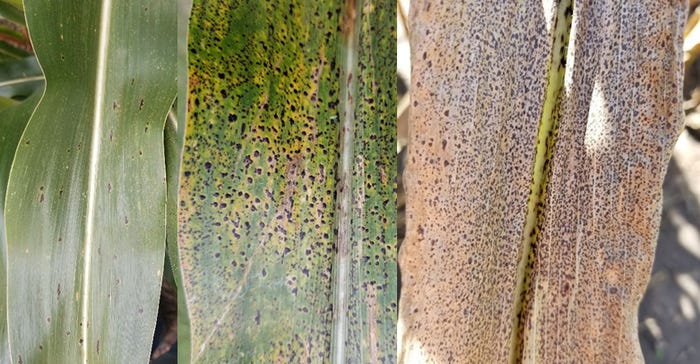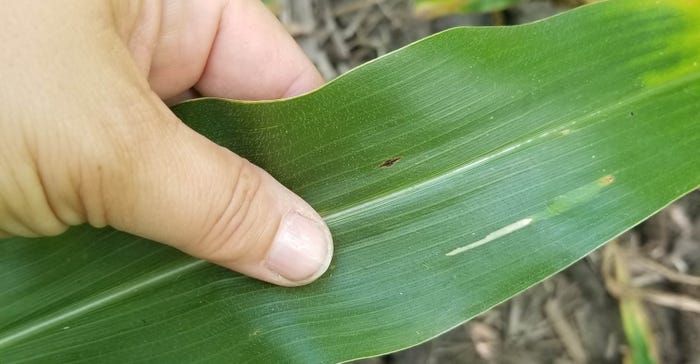July 6, 2021

It was a good planting season in most of the Corn Belt. Now that corn is pollinated, you need to protect it from diseases. Which pathogens will be more prevalent this summer depends largely on weather conditions.
Rains are good for crops, but wet weather is also good for many diseases that are opportunistic. Some leaf diseases might develop and dominate in August. You need to watch out for these:
Gray leaf spot. This disease shows up to some degree almost every year. According to the Purdue University Corn & Soybean Field Guide, odds for gray leaf spot go up with warm, humid weather, especially with long dew periods, often in the mornings. If the weather turns dry, gray leaf spot may be less of a threat. However, this disease can show up into September and still cause yield loss if conditions produce an outbreak.
Northern corn leaf blight. This disease prefers moderate temperatures between 65 and 89 degrees F with long dew periods. So far, 2021 has featured rather wild up and down temperature swings. Even though northern corn leaf blight is less likely if it’s warmer and drier, you can’t rule it out. Lesions are larger and irregularly shaped compared to gray leaf spot lesions. They are grayish or tan in color.
Tar spot. This relatively new disease is caused by two fungi that affect ear husks and leaves. More prevalent in northern counties, it can come in later. Tar spot overwinters in residue, so if it has been identified in your area before, inoculum is likely around. This disease takes hold fastest when it’s cool and humid with prolonged leaf wetness. Even if it’s a dry season, if it turns wet later, be on the lookout for tar spot. It starts out as tiny black specks and can take over whole plants quickly if weather conditions are favorable.

Southern rust. This fungus doesn’t survive in Corn Belt climates over winter and must blow in from Southern states. Its presence was felt in some areas in 2020. Typically, it can show up during this time of year. Dew periods of at least seven hours favor rust development, according to observations by Purdue specialists.
At one time, people believed southern rust came in too late to do much harm in the Corn Belt. However, just a few seasons back, it came in hard during the first weekend of September on a storm front and zapped later-planted corn. Some people chose not to spray because it was late, and they didn’t expect big yields anyway. In retrospect, that was a mistake because yield losses were often large.

There are two lessons here: One, scout all the way to the end of the season. Two, especially this year when commodity prices are higher, remember that those first few bushels a disease may steal off the top can be a chunk of your profit.
Nanda is director of genetics for Seed Genetics Direct, Jeffersonville, Ohio. Email [email protected] or call 317-910-9876.
About the Author(s)
You May Also Like






